 How can documentation support assessment? How do you know when learners know? What types of learning do we value, but don’t normally assess? In our recent two-day, hands-on workshop, Documenting for Assessment, we explored these questions while developing a variety of tools and strategies to make learning visible and broaden our notion of what is assessable. One of the tools we have been integrating into our workshops is a Documentation Prompt Jar.
How can documentation support assessment? How do you know when learners know? What types of learning do we value, but don’t normally assess? In our recent two-day, hands-on workshop, Documenting for Assessment, we explored these questions while developing a variety of tools and strategies to make learning visible and broaden our notion of what is assessable. One of the tools we have been integrating into our workshops is a Documentation Prompt Jar.
The Documentation Prompt Jar is an accessible and adaptable array of documentation prompts—written on paper and contained in a jar or box—to support learners in capturing their work, process, experience, and thinking as they make and learn. Use of this prompting tool can be woven seamlessly into any lesson, activity, unit, or progression and can support both facilitated and unfacilitated documentation (See our resources on documentation and learning progressions in our recently published Building a Maker-Centered Pathway to Invention learning module to read more).
In order to make the documentation prompt jar routine in our two day workshop, we used it throughout a learning progression built on three different mechanical motion and linkage activities. We started off with a Parts, Purposes, Complexities thinking routine where we looked carefully and analyzed different mechanical objects.

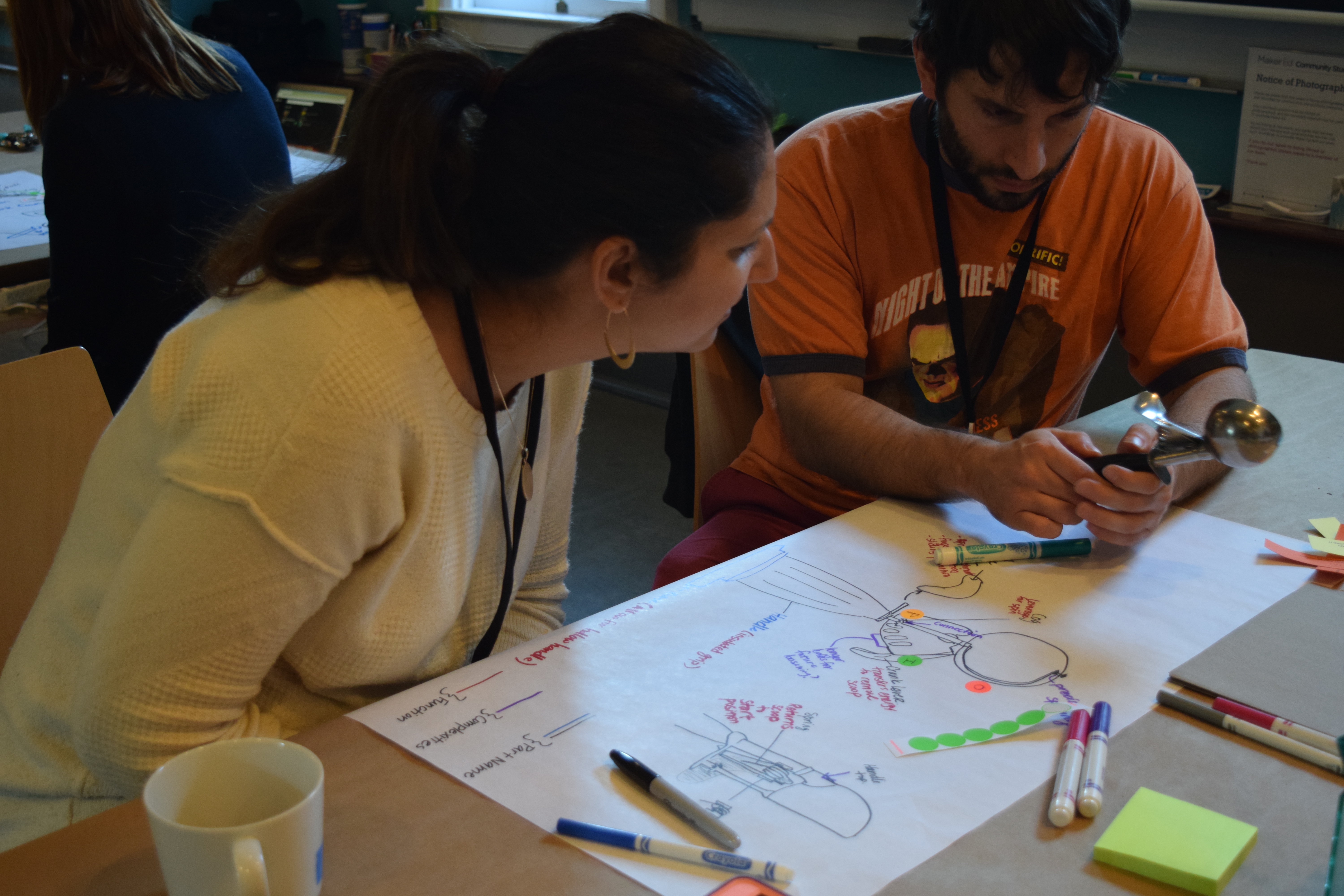
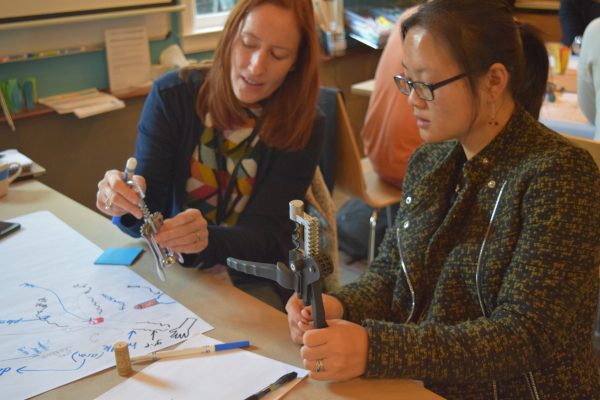
After participants looked closely at their objects for fifteen minutes, we paused them, asked them to draw a prompt from the jar and then follow the prompt to document their thinking and process in the moment. Each prompt included different methods of documentation, from writing and sketching, or taking photos and videos, to interviewing their neighbors. These were focused on the development of ideas, decisions, mistakes, corrections, or changes in direction during the activity.
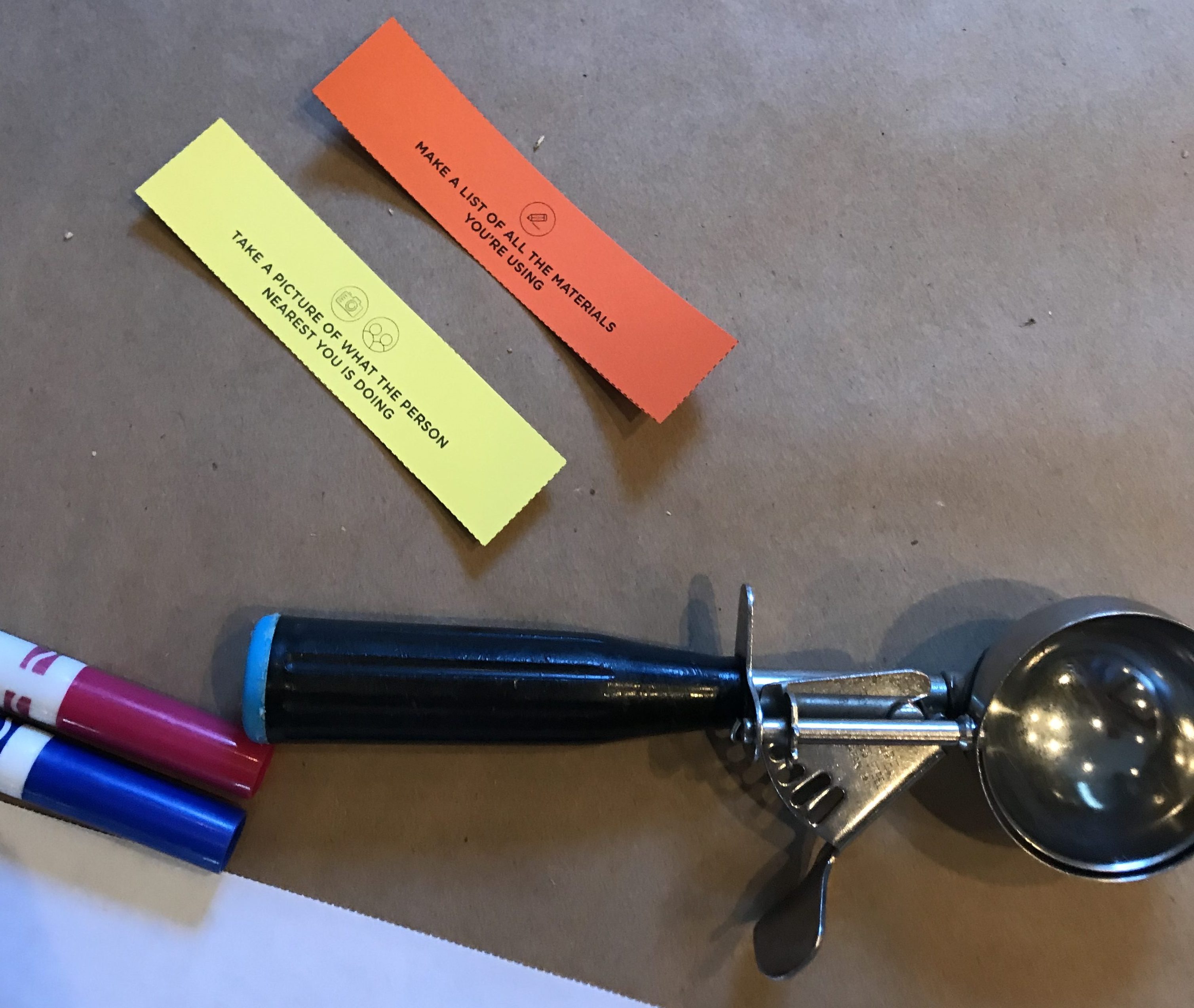
Some Example Documentation Prompts:
- TAKE A PICTURE OF WHAT YOU’RE DOING
- WRITE DOWN A QUESTION YOU’RE WORKING ON ANSWERING
- INTERVIEW THE PERSON NEXT TO YOU ABOUT WHAT THEY’RE DOING AND RECORD IT
- MAKE A LIST OF ALL THE MATERIALS YOU ARE USING
During our second activity, participants created a model of their real world mechanism out of cardboard linkages and other low-tech prototyping tools. They identified the parts of their linkages and measured the ratio relationship between movements. We changed the documentation prompts in the jars to focus on one of the Learning Dimensions of Making and Tinkering (from the Exploratorium’s Tinkering Studio) – Initiative & Intentionality – along with math content knowledge – Ratios & Measurements.
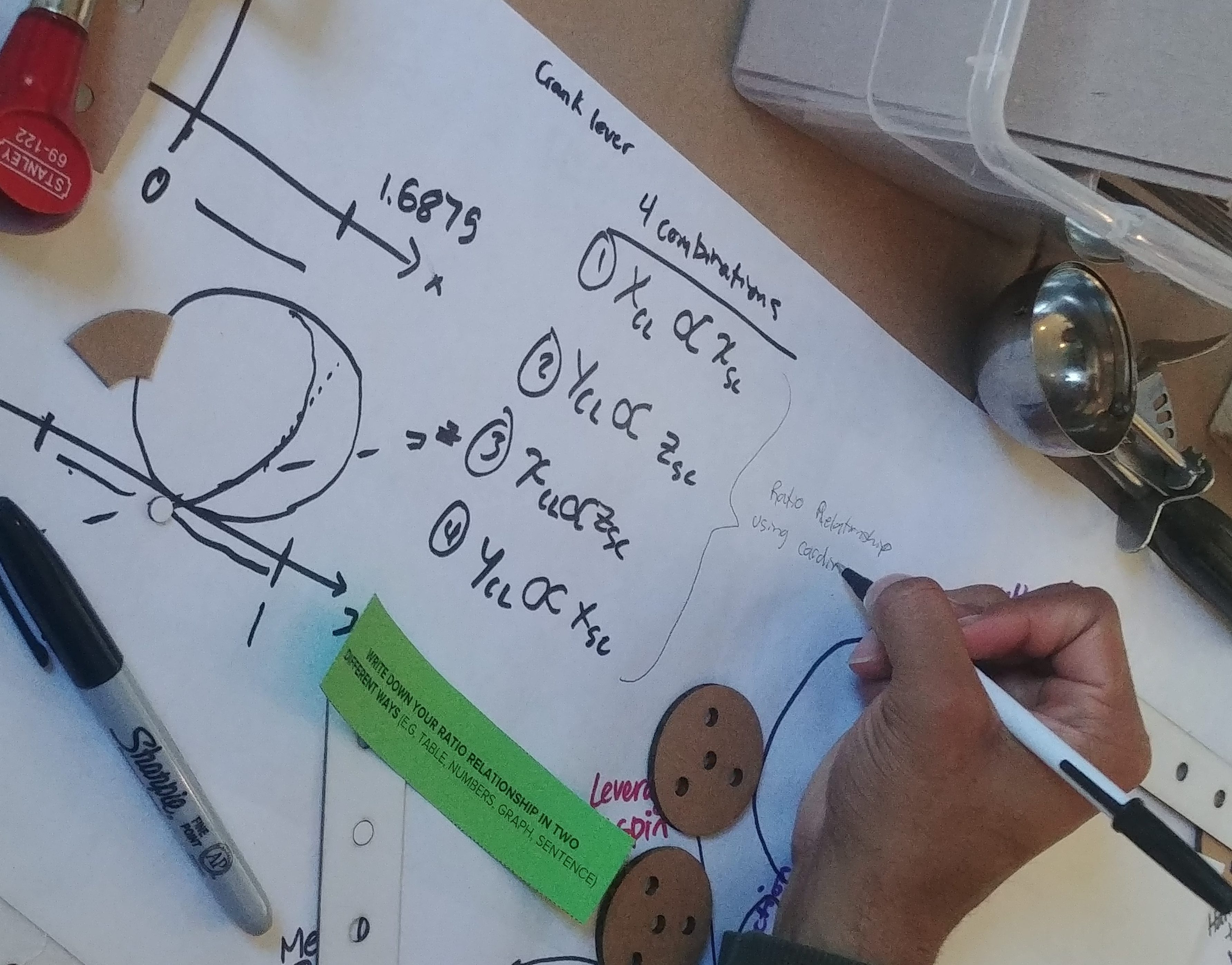
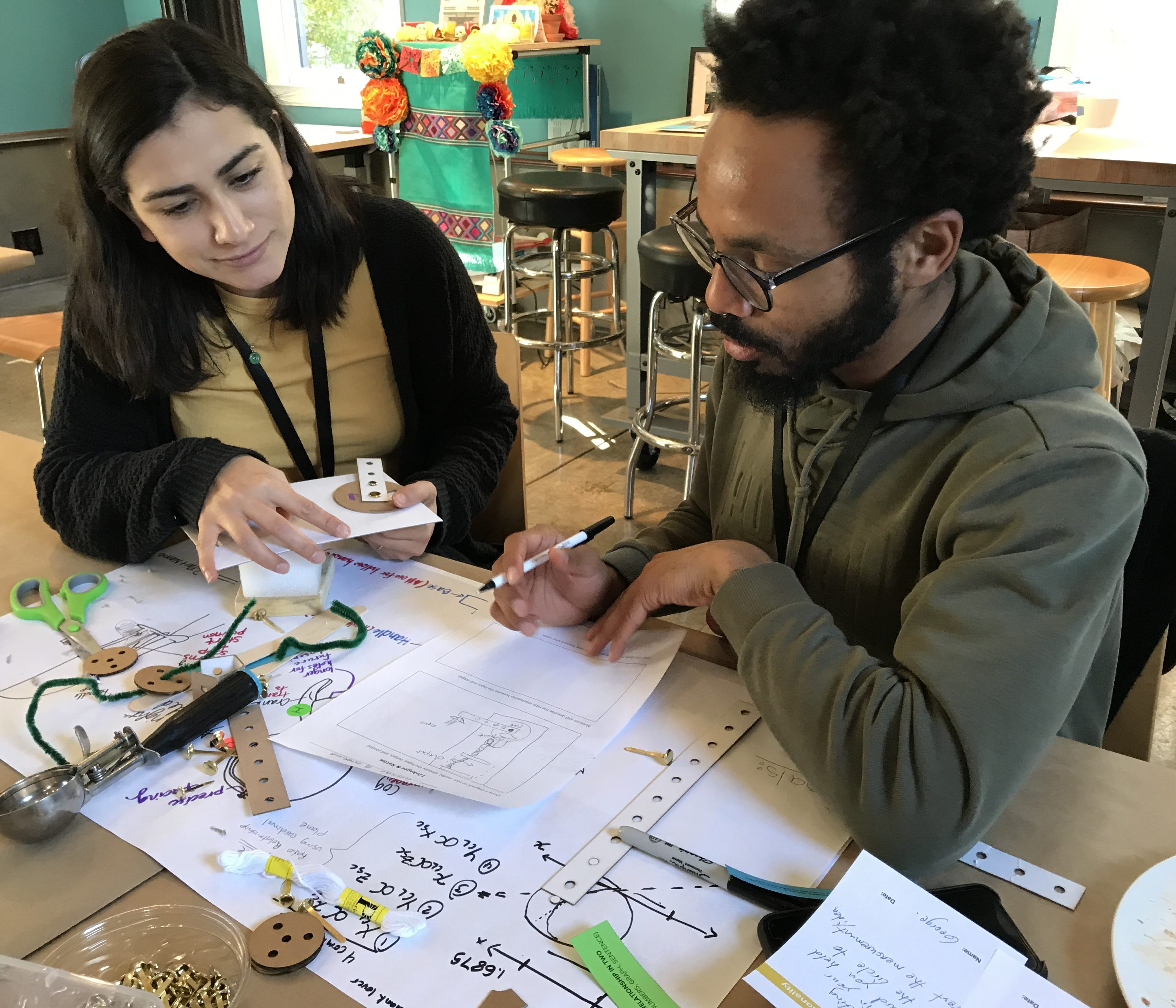
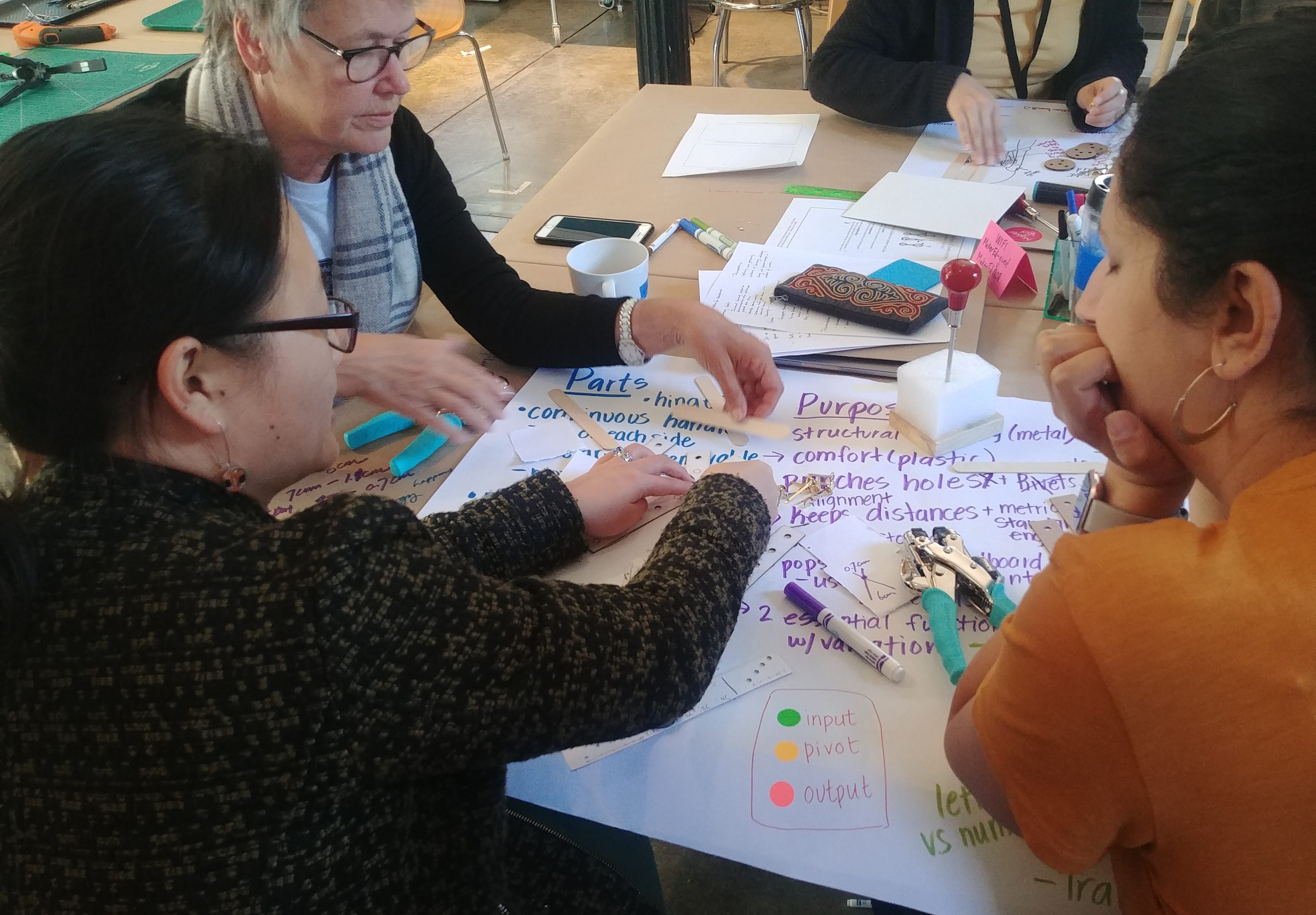
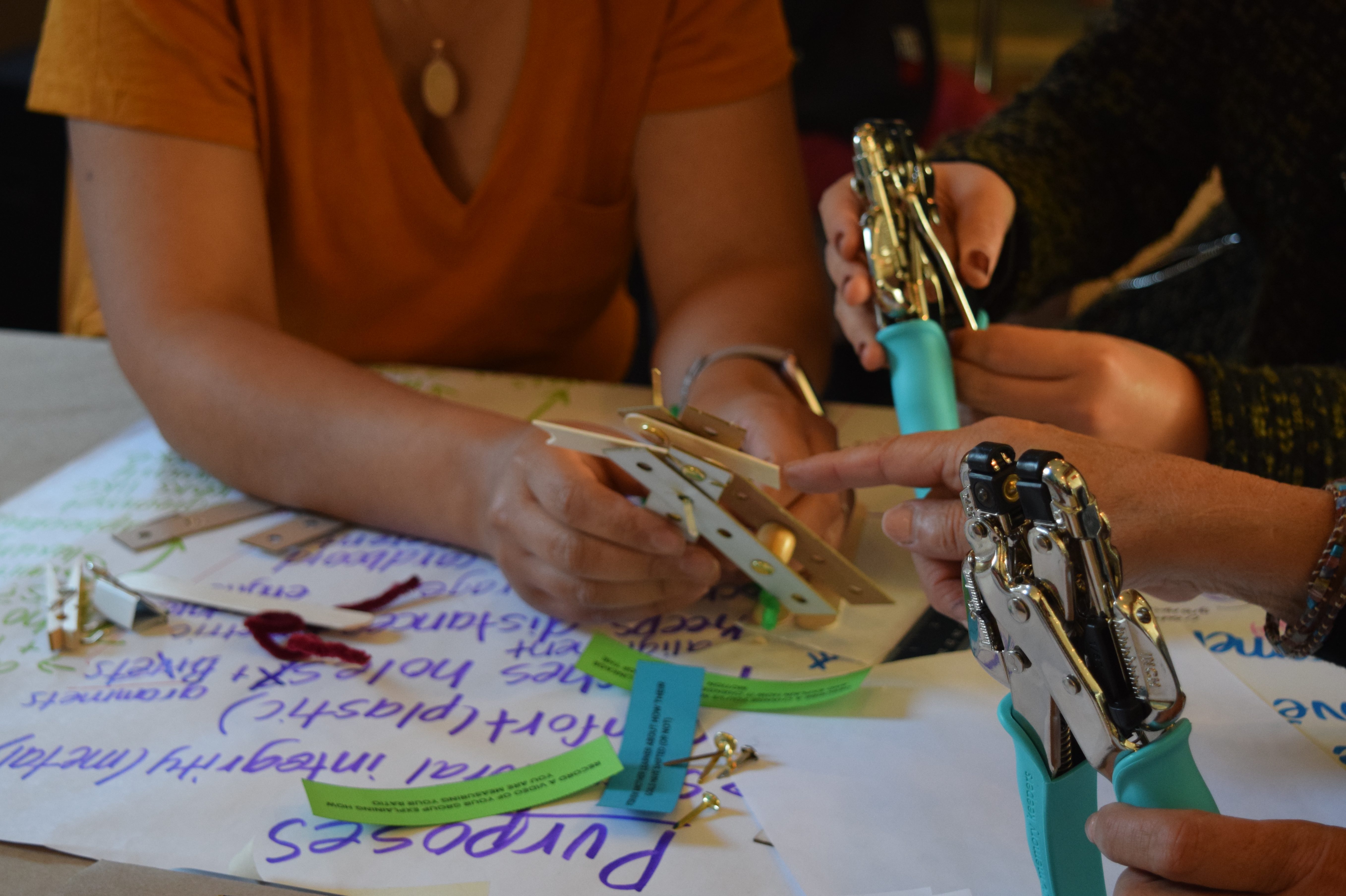
While they constructed their object, we gave our Documentation Baton to a participant who then had the role to remind everyone to pull a prompt and document their learning.
Example Initiative & Intentionality Prompts
- WHAT IS ONE NEW IDEA YOU INCORPORATED IN YOUR WORK TODAY?
- RECORD A VIDEO OF SOMETHING THAT DIDN’T WORK AND EXPLAIN WHAT YOU LEARNED
- DRAW A SKETCH OF YOUR NEXT STEP OR IDEA
Example Ratios & Measurements Prompts
- WRITE DOWN YOUR RATIO RELATIONSHIP IN TWO DIFFERENT WAYS (E.G. TABLE, NUMBERS, GRAPH, SENTENCE)
- DRAW THE MOTION YOU ARE TRYING TO ACHIEVE AND LABEL THE QUANTITIES YOU ARE MEASURING
- RECORD A VIDEO OF YOUR GROUP EXPLAINING HOW YOU ARE MEASURING YOUR RATIO
For our third activity (on day two), we gave participants a peg board and asked them to create a “Useless Machine” that implemented different linkage mechanisms as well as apply their ability to measure ratios. We used the more focused prompts on Initiative & Intentionality with Ratios & Measurements and prompted participants to document along the way.

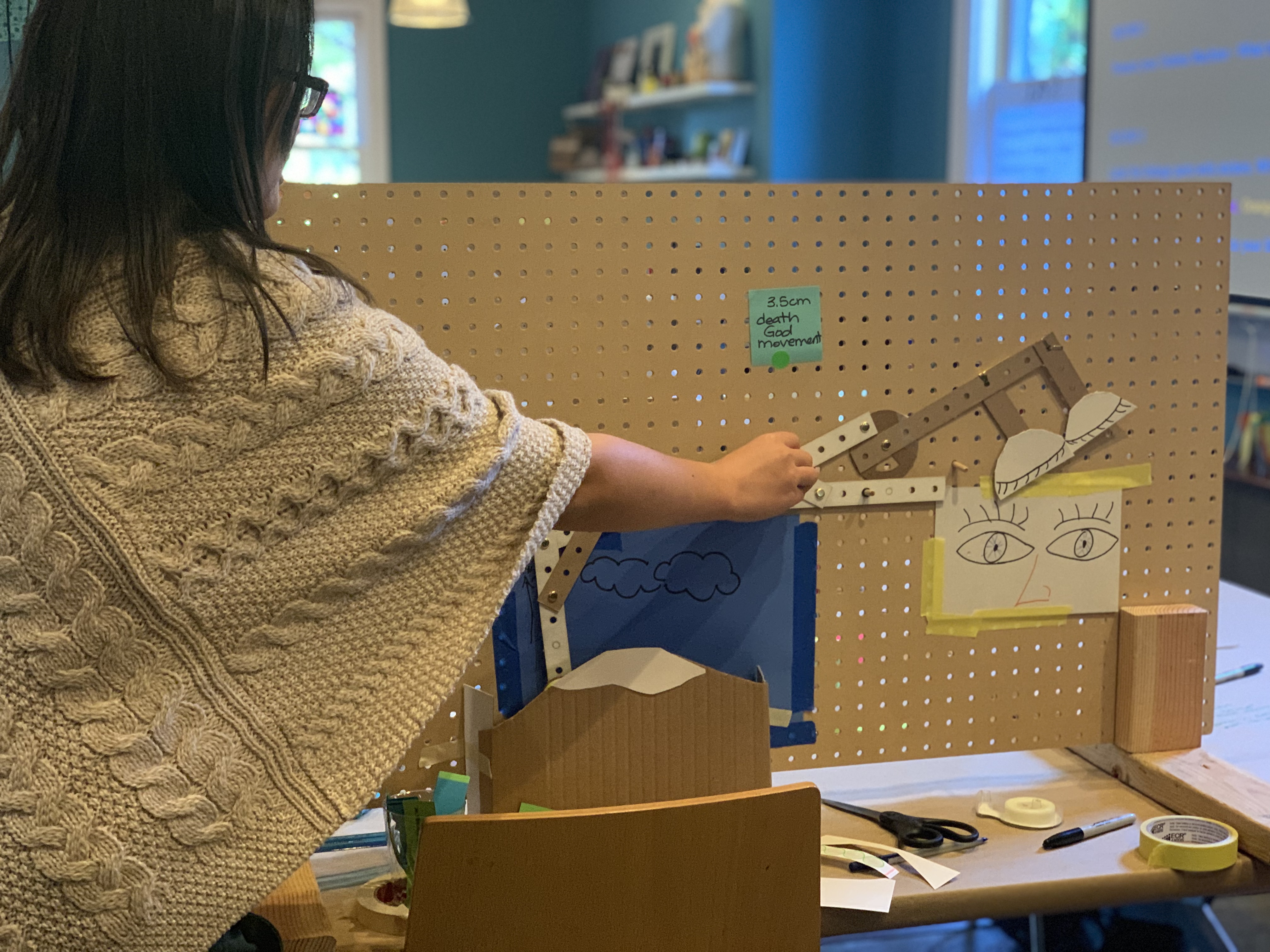
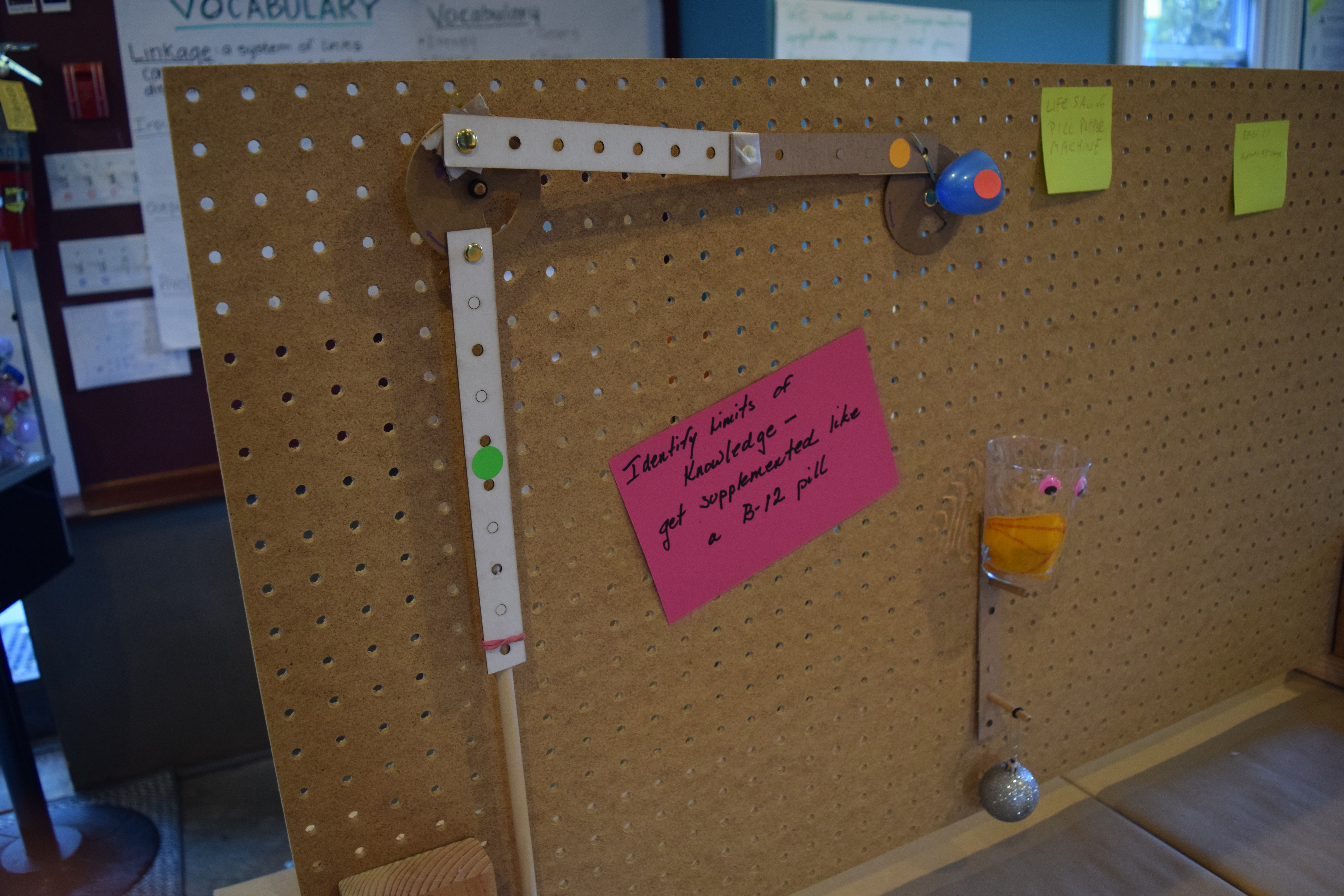
Towards the end of our workshop, participants engaged in designing their own documentation and assessment tools. Through the making activities, we had also introduced a variety of tools and resources from Beyond Rubrics, Open Portfolio Project, and Agency by Design. Since we had educators from across K-12 through higher education, we encouraged participants to remix and adapt any of the tools to best fit their learning environment. A core question that arose during this time was about the difficulty of building documentation habits with our learners. How do you make documentation an engaging part of a making activity? One of our participants remixed the Documentation Prompt Jar in an ingenious way: she created a “Spin the Documentation Wheel” version using https://wheeldecide.com.
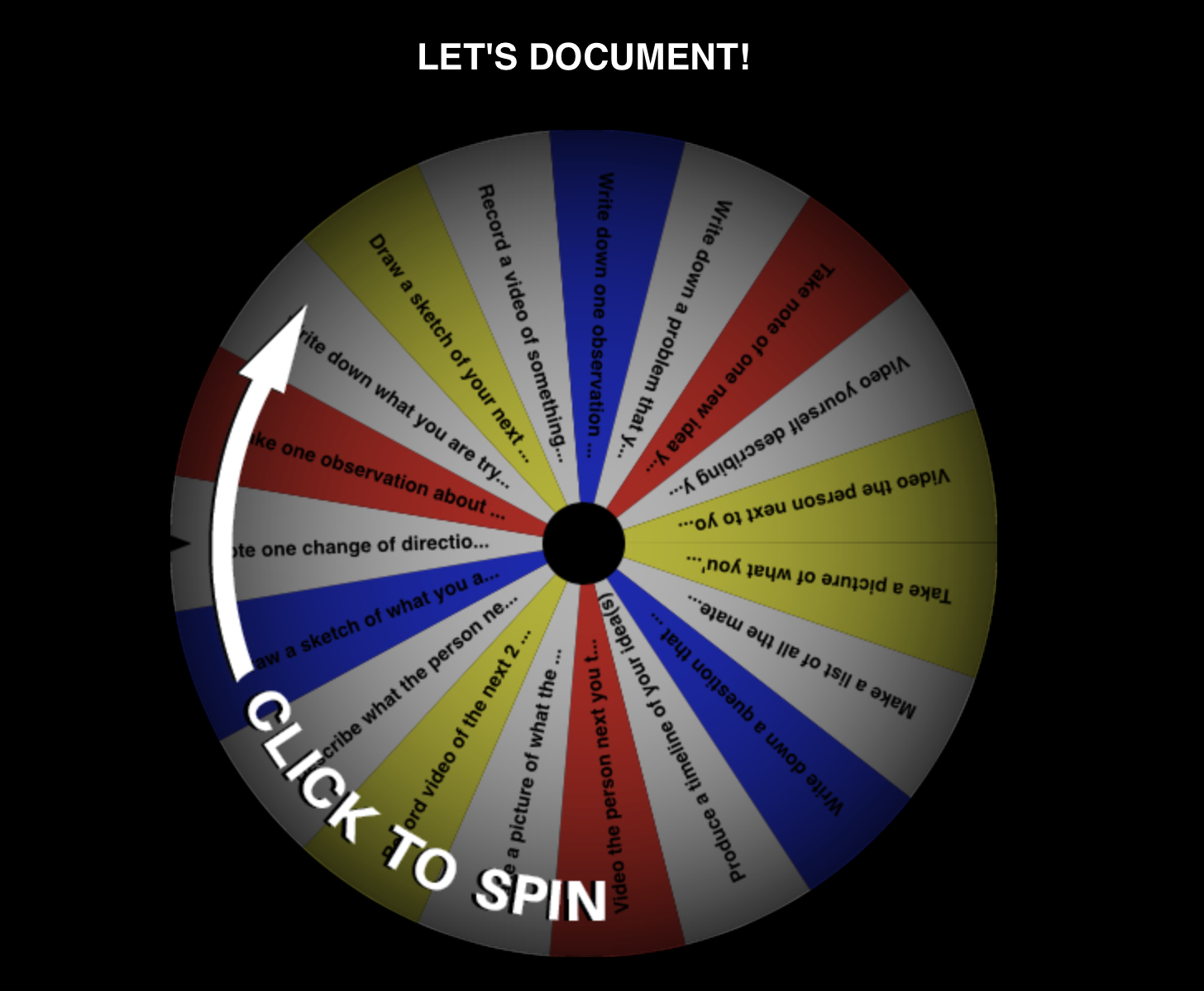 She explained how she would use this tool:
She explained how she would use this tool:
“I would like to use it in my next unit “the DIY Concert” – as students learn the physics of music through exploring different instruments, I’ll pause them once during each class to spin the documentation wheel, and they will put what they’ve documented on their portfolio site as an exit ticket for the day.”
This example of how the Documentation Prompt Jar was redesigned, inspired us to think about other ways we can support educators to design for their learning environments. A major takeaway from this workshop is that this is an iterative design process. As educators, we need to design how we use these tools in our learning contexts so that it meets our learners’ needs (and our needs as educators).
Throughout the course of our workshop, we had offered these three definitions:
Documentation: Capturing and gathering evidence of learning, thinking, doing, and process through a variety of media.
Assessment: A conversation between educators and learners or between learners in order to develop understanding around learners’ development of content, skill, and mindset to support their learning and growth.
Evaluation: A measure of learning to judge understanding or progress (possibly for grading and reporting).
Through the core questions we explored during these two days with educators, we know that we have to figure out strategies to routinize documentation and reflection while shifting our thinking of assessment as a conversation with and between our learners.
Resources in this Blog Post
Interested in learning more about incorporating maker centered learning in your classroom, library, museum, after school program, or makerspace? Explore our workshop offerings!
Also check out these online resources:
- Maker Ed’s Documentation Prompt Jar: A tool for integrating documentation into learning experiences as they happen.
- Maker Ed’s Building a Maker-Centered Pathway to Invention: A free, self-paced online learning model that integrates invention, entrepreneurship, and making.
- Parts, Purposes, Complexities thinking routine: This thinking routine helps students slow down and make careful, detailed observations by encouraging them to look beyond the obvious features of an object or system.
- The Exploratorium’s Learning Dimensions of Making and Tinkering (from the Tinkering Studio): a framework for noticing, supporting, documenting, and designing assessments for student learning.

Leave a Reply